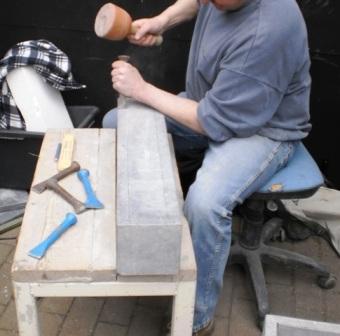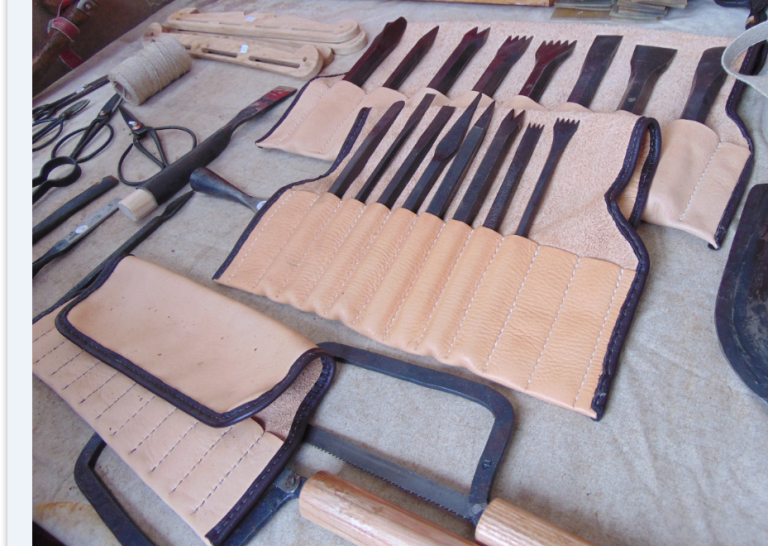Igneous rock (e.g. granite) is formed by solidification of molten stone (magma) ;
sedimentary rocks (tuff stone, hard stone for tombs and sills) by sedimentation or precipitation of sediment, and
metamorphic rocks (marble, slate) by the growth of new minerals in other rocks. Erosion can break stone down and form new rock again.
Especially the Niedermendiger basaltic lava was used in the Netherlands for example millstones.
From rocks minerals are extracted, and ores or useful elements yielded.
Natural stones such as granite, slate and marble are also used as building material.
Stone carving
 Nowadays room long chain saws and meters high circular saws are used to cut stone. And every hobbyist has a angle grinder. Easy.
Nowadays room long chain saws and meters high circular saws are used to cut stone. And every hobbyist has a angle grinder. Easy.
Many ancient buildings around the world consist of large and great carved stones. From Roman times is known the watermill (multi blade shake saw) used to cut stone. Many researchers claim that stone was cut e.g. also in Egypt. This would be done with bronze saws with jewel - dots (diamond?). Precise information on the composition and shape of the blade, attaches methods for points etc. I couldn’t find anywhere. The well-preserved city of Ephesus is full of carved marble pieces. According to a guide threads would be used for cutting, and there was sand sprinkled in the saw cut. For (quite soft) marble, this seems possible. But hard to get perfectly straight and sharp corners. Tests with copper or bronze cylinders and scouring (abrasive, sand) showed that cores can be drilled this way.
To cleave stone blocks wedges can be hammered. To get a more controlled, straight fault line is first drilled a row of holes. In every one are put two L - shaped, widening split irons (feathers or shims, with the short legs of the L top, pointing apart). In between, an intermediate chisel (plug) is knocked.
Another method is dry organic material pressed into the holes (peas, bark, wood) and this constantly making wetter. By swelling the rock burst.
Account should be taken of the texture and the tension in the stone for handling. Clearly stratified rock and shale is easy to split. In the line direction.
Stone blocks and slabs can be further cut or carved, from coarse to very fine.
 Brute or rustic: rough cut
Brute or rustic: rough cut
Grove: a flat worked edge as a border
Spires: with mallet or hammer and iron spire make the surface more evenly
Boucharding: a dotted blade hammer to make a rough, uniformly grained surface. The hammer has a checkerboard pattern of incised V’s, such as the mallet used to hit and tenderize meat.
Scharreren: make top layer surface flat (to possibly sand later)
Chamfering: with mallet and cylindrical hammer make parallel grooves (finer than scharreren)
Cathedral stroke: chiseled grooves pattern of square mesh perpendicular to each other
Herringbone stroke: chiseled in herringbone shape
Sanding: abrasion with a harder, abrasive stone on the surface
Sugaring: smoothing, traditional with a mixture of half- raw, half boiled linseed oil.
Polishing: make shiny with e.g. emery or lead scrape.
The only stone that some contribute, they throw in a window. (Karel Jonckheere)
Who among us is the quickest, cast the first stone (Milton Berle)
https://nl.wikipedia.org/wiki/Steenhouwer
http://home.planet.nl/ ~ vink0077/vuursteen.html
